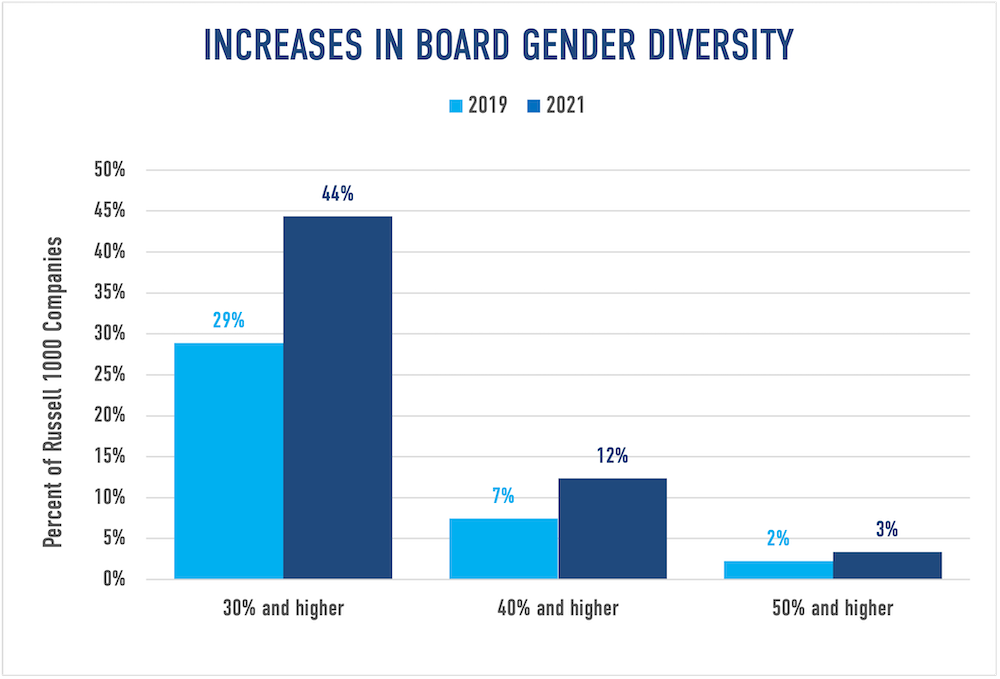Daron Acemoglu is Institute Professor of Economics at Massachusetts Institute of Technology; Alex He is Assistant Professor of Finance at the University of Maryland Robert H. Smith School of Business; and Daniel le Maire is Associate Professor of Economics at the University of Copenhagen. This post is based on their recent paper.
Over the last decades, there has been a decline in the labor share and stagnant wage growth in many advanced economies. In a new working paper, we argue that changing managerial attitudes and practices towards rent-sharing have been a major contributing factor to the decline in the labor share and slowdown of wage growth. In particular, we focus on the role of business schools, which have been one of the most important institutions defining the ultimate ends of the corporation. We document that the appointment of managers with a business school degree (“business managers” for short) leads to lower wages and labor share at their firms.
We collect detailed data from both the US and Denmark on CEOs’ educational background and match CEOs to firm-level and worker-level datasets. Our sample covers all publicly traded firms in the US between 1992 and 2014, and all firms with at least five employees in Denmark between 1995 and 2011. In both countries, the share of firms with business managers has grown rapidly over time. For example, in the US, the share of public companies with business managers has increased from 26% in 1980 to 43% in 2020.
We start by analyzing firms which switch from a non-business manager to a business manager. We compare the evolution of wages, labor share, and other firm outcomes of these firms with a set of control firms that always have non-business managers. We control for industry-year fixed effects, region-year fixed effects, and size quintile-year fixed effects to absorb industry-specific, region-specific, and size-quintile-specific trends. Figure 1 shows that in the US, wages decrease by 6%, and the labor share of sales decreases by 1.8 percentage points (translating into a decrease in the labor share of value added by 5 percentage points) five years after the appointment of a business manager. In Denmark, wages decrease by 3% and the labor share of value added decreases by 3 percentage points five years after business managers are hired. The results are not due to changes in firms’ workforce composition, and we find similar results when considering the wages of workers staying at the firm. However, we find no significant changes in value added, investment, or employment after the appointment of business managers, suggesting that business managers are not more productive than their non-business peers.

Proposal on Climate-Related Disclosures for Investors
More from: Lawrence Cunningham
Lawrence A. Cunningham is the Henry St. George Tucker III Research Professor at George Washington University Law School. This post is based on a comment letter by Professor Cunningham and 21 other Professors of law and finance.
Related research from the Program on Corporate Governance includes The Illusory Promise of Stakeholder Governance by Lucian A. Bebchuk and Roberto Tallarita (discussed on the Forum here); For Whom Corporate Leaders Bargain by Lucian A. Bebchuk, Kobi Kastiel, and Roberto Tallarita (discussed on the Forum here); Restoration: The Role Stakeholder Governance Must Play in Recreating a Fair and Sustainable American Economy – A Reply to Professor Rock by Lucian Bebchuk, Alma Cohen, and Charles C. Y. Wang (discussed on the Forum here); and Stakeholder Capitalism in the Time of COVID, by Lucian Bebchuk, Kobi Kastiel, and Roberto Tallarita (discussed on the Forum here).
This post is based on a comment letter sent to the SEC by Stephen M. Bainbridge (UCLA), Jonathan Berk (Stanford), Sanjai Bhagat (Colorado), Bernard S. Black (Northwestern), William J. Carney (Emory), Lawrence A. Cunningham (GW), David J. Denis (Pittsburgh), Diane Denis (Pittsburgh), Charles M. Elson (Delaware), Jesse M. Fried (Harvard), Sean J. Griffith (Fordham), Jonathan M. Karpoff (Washington), Scott Kieff (GW), Edmund W. Kitch (Virginia), Katherine Litvak (Northwestern) Julia D. Mahoney (Virginia), Paul G. Mahoney (Virginia), Adam C. Pritchard (Michigan), Dale A. Oesterle (Ohio State) Roberta Romano (Yale), Christina P. Skinner (Pennsylvania),and Todd J. Zywicki (George Mason).
We appreciate the contributions of colleagues who have commented on the SEC’s proposal for mandatory climate-related disclosure rules for public companies (the “Proposal”). In particular, we read with interest two letters analyzing whether the Proposal is within the SEC’s rulemaking authority: one from a group of thirty law professors (the “Thirty Professors’ Letter”) and another by Professor John Coates (the “Coates Letter”).
We are moved to offer additional thoughts because these two letters, compared to our prior letter, reflect divergent understandings of the nature and factual background of the Proposal. Moreover, we believe those different understandings will likely play a role in any challenge to final rules that may be adopted pursuant to the Proposal. Illuminating those differences will therefore assist the SEC and ultimately the federal courts.
We agree with the Thirty Professors’ Letter and the Coates Letter that the SEC has broad statutory authority to require disclosures for the protection of investors. We further agree that the relevant inquiry is whether a proposed disclosure requirement will protect investors, not whether it is material, although the two inquiries will generally overlap. Finally, we agree that the relevance of a disclosure requirement to a social issue or to non-shareholder constituents does not demonstrate, in and of itself, that it exceeds the SEC’s authority.
Indeed, the two letters make a strong case that the SEC’s 2010 guidance regarding climate change disclosures (the “2010 Guidance”) was a valid exercise of the SEC’s statutory authority. The 2010 Guidance reminded issuers that several elements of the existing disclosure framework, including disclosure of the material effects of compliance with laws and regulations, material pending legal proceedings, and material risk factors, may require disclosures relating to climate change.
READ MORE »